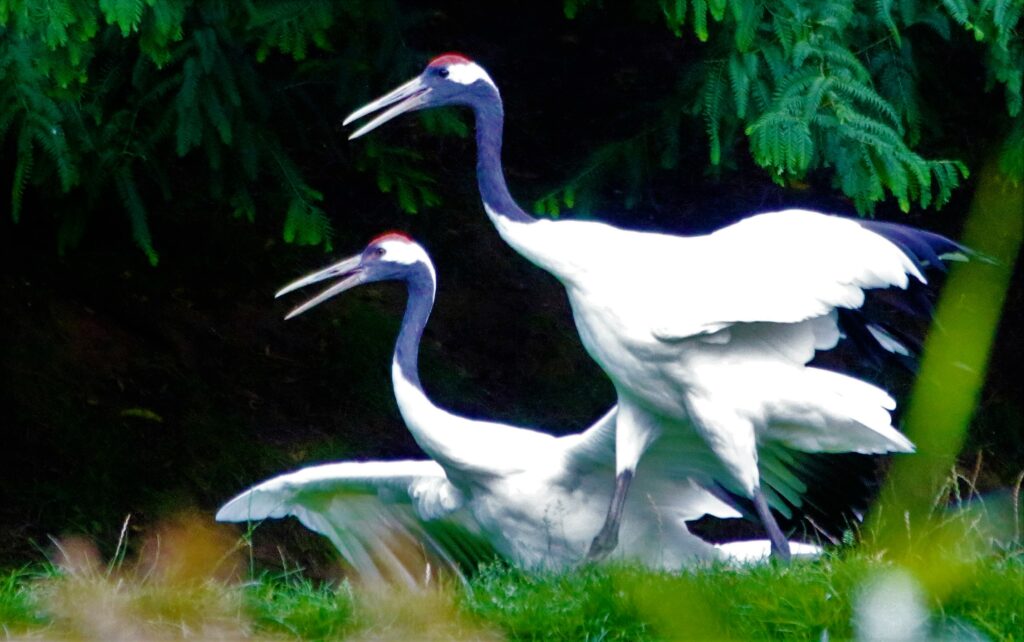
RED-CROWNED CRANE
Class: Birds
Order: Gruiformes
Family: Gruidae
Genus: Grus
Species: Grusjaponensis
Geographic distribution: Eastern Asia
Habitat: Deep-water marshes
Size / Wingspan: 160 cm / 240 cm
Longevity: 30 to 50 years
Weight: 7 to 10 kg
Sexual maturity: 2 – 3 years
Incubation: 1 month
Clutch: 2 eggs
Diet: Omnivore, insects, amphibians, fish, rodents, grasses
Protection Status: IUCN Status CR – Vulnerable
Description
The red-crowned crane is one of the largest birds in the world. This species is distinguished by its ability to feed in deep waters, a rare behavior among cranes. To do so, it walks half-submerged in muddy areas and uses its longbeak to catch prey within its reach.
Threats and preservation
The red-crowned crane is threatened by habitat loss due to agriculture and road infrastructure. To protect it, international agreements and researchon its migratory patterns have been established. Protected areas have been created, and winter feeding stations help the cranes survive during the winter. Japan has also made its power lines morevisible to reduce collisions, and regular surveys are conducted in breeding and wintering areas.